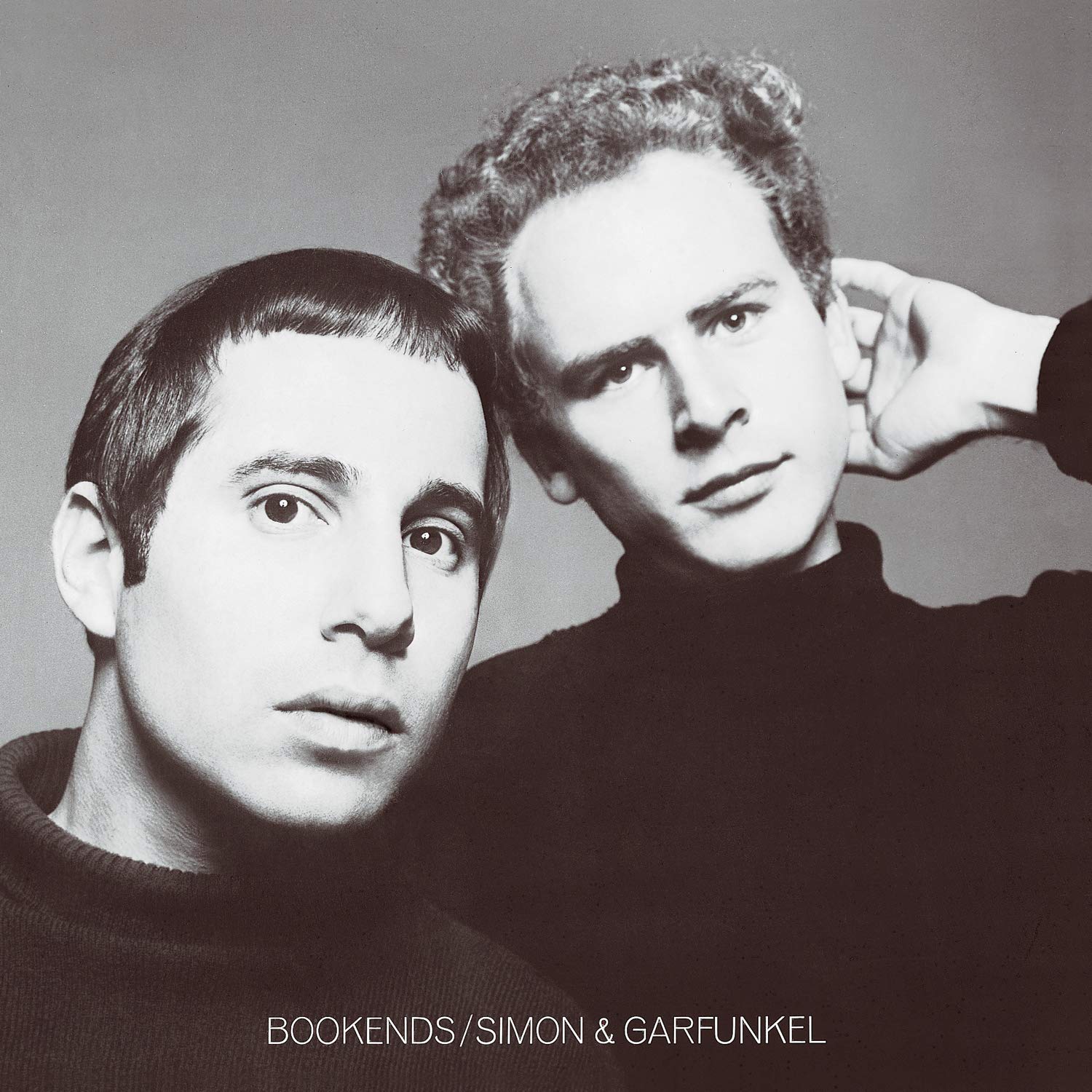
This Simon & Garfunkel release was one of many by the duo to dominate the charts in ’68.
In 1968, music buyers were still purchasing plenty of singles, with rock bands like The Doors, the Rolling Stones and The Beatles sharing the Top 40 airwaves with popular vocalists like Bobby Goldsboro and Judy Collins and soul hits from Otis Redding and O.C. Smith.
Here’s a recap of the number one albums of 1968 in the U.S., including many classic rock favorites, as determined each week by Record World. Thirteen different albums claimed the top spot this year; each had a story to tell. Two artists in particular, The Beatles and Simon & Garfunkel, dominated the charts.
Listings are in reverse order, saving the longest-running titles for the end. [Fellow chart nerds might note that several of the albums failed to reach #1 on rival trade magazine, Billboard.]
Bob Dylan – John Wesley Harding (1 week)
The album, perhaps best known for its song, “All Along the Watchtower,” was recorded during Dylan’s Nashville period of the late ’60s. Purists will argue that it wasn’t until his back-to-back-to-back mid-’70s studio releases, Planet Waves, Blood on the Tracks and Desire, that he topped the LP chart. Though this one stalled at #2 on Billboard, it did, indeed, top the Record World chart on Feb. 24, two months after its Dec. 27, 1967 release.
Jose Feliciano – Feliciano! (1)
Though he had already released seven studio albums, it wasn’t until this LP that most of the world was introduced to this musician from Puerto Rico, who was still just 22 when this arrived in June. The album includes numerous covers of recent hits by the Beatles, the Mamas & the Papas, and more, none bigger than his complete reworking of the Doors’ “Light My Fire.”
The Rascals – Time Peace (1)
This June 24 greatest hits release is chock full of the Jersey band’s terrific singles, including the #1s “Good Lovin'” and “Groovin’.” But Atlantic Records somehow chose to omit “People Got to Be Free,” which was released as a single one week later, and ended up becoming the group’s third to top the pop chat. Go figure. The Rascals’ Atlantic studio output is being released as a box set. It’s available for pre-order in the U.S. here and in the U.K. here.
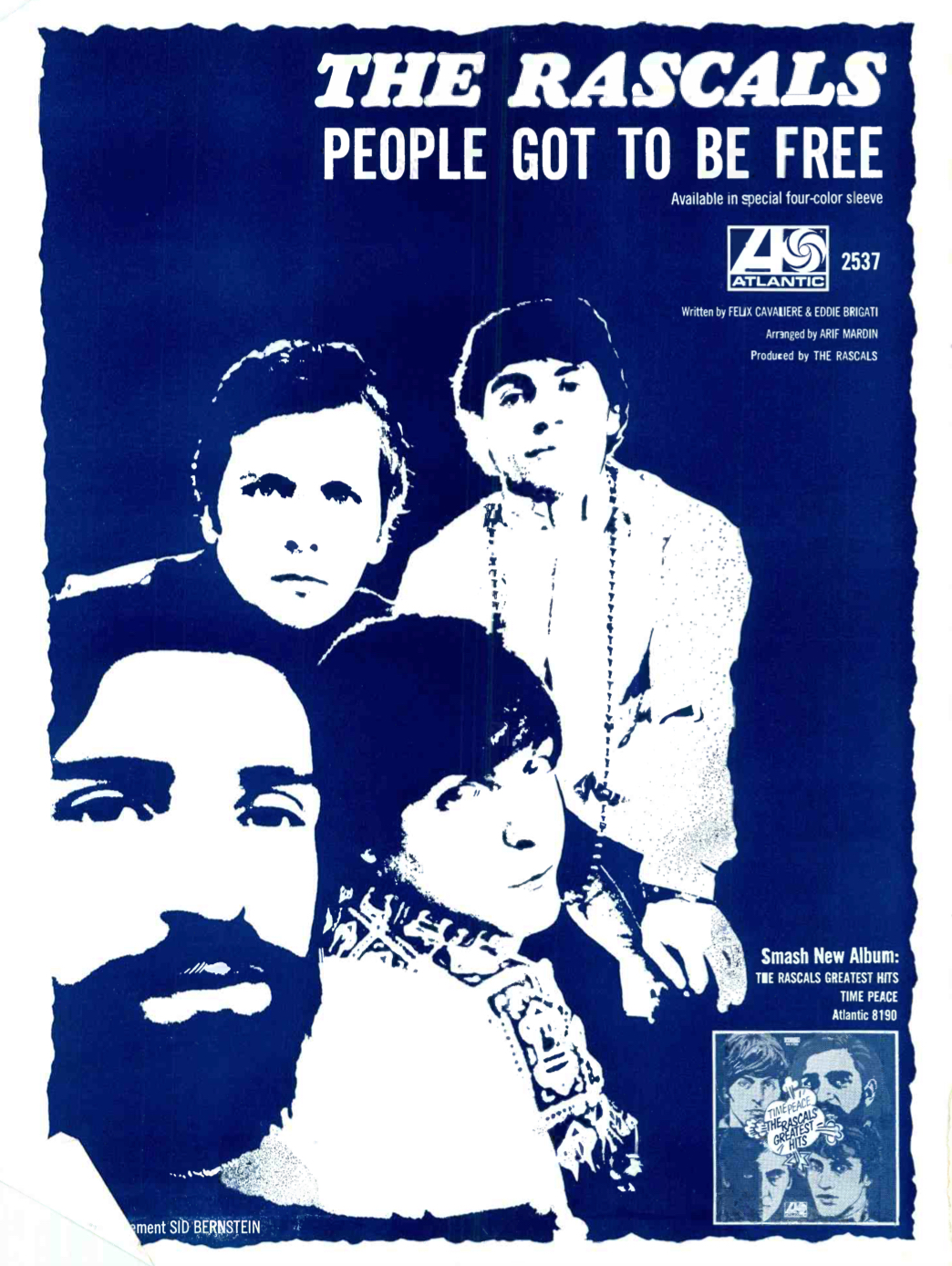
This ad for the Rascals’ big single and greatest hits album appeared in the July 13, 1968 issue of Record World.
The Beatles – The Beatles (aka The White Album) (3)
1968 not only ended with a Beatles‘ sales run, the year also started that way. (More on that later.) The White Album, released on Nov. 22, closed the year at #1. (As we changed calendars, it would begin 1969 with another 11 straight weeks at the top.)
Cream – Wheels of Fire (3)
This two-LP set includes such classic rock songs as “White Room” and “Born Under a Bad Sign” on its studio set and “Crossroads” and “Toad” taken from a series of performances in San Francisco earlier that year on its live disc. The late June / early July release rose up the chart quickly, reaching #1 on Aug. 3.
Herb Alpert & the Tijuana Brass – The Beat of the Brass (4)
The trumpeter was one of his label’s (A&M Records) biggest and most consistent stars, with a steady stream of titles. He topped the album and singles chart on July 6, thanks to his solo recording of a Bacharach-David composition, “This Guy’s in Love With You,” which became the label’s first #1 single. The May release stayed on top for four consecutive weeks.
Related: See where Alpert’s single ranked among the year’s biggest
The Doors – Waiting For the Sun (4)
They had come tantalizingly close with their first two albums, which reached #2 and #3 respectively. With this July 3 release, the quartet were in rarified air when the album reached #1 on Aug. 31, earning their second #1 single with “Hello, I Love You,” in the process.
Jimi Hendrix – Electric Ladyland (4)
The third album in 14 months with Noel Redding and Mitch Mitchell received contributions from some of the biggest artists of the era including Traffic’s Steve Winwood, Dave Mason and Chris Wood, as well as Brian Jones, Al Kooper, and others. It includes Hendrix’s biggest U.S. pop hit: his cover of Dylan’s “All Along the Watchtower.” The October release was an instant hit, reaching #1 in just its third week on the chart on Nov. 2.
Related: 10 years later… only 6 LPs topped the chart in 1978
Big Brother & the Holding Company – Cheap Thrills (6)
This Aug. 12 release was the San Francisco band’s second of two studio albums with Janis Joplin. (It’s also closely identified with its iconic cover drawn by the cartoonist Robert Crumb.) The album includes the big song, “Piece of My Heart,” with Joplin’s powerhouse vocal, plus softer fare like Gershwin’s “Summertime” and the electric “Ball and Chain.” It hit the top for four consecutive weeks on Sept. 28 and returned to #1 in late November.
Related: 1968 – The year in 50 classic rock albums
The Graduate (Soundtrack) (6)
The Mike Nichols film introduced us to Dustin Hoffman and “plastics.” Understandably, its big soundtrack is thought of as a Simon & Garfunkel album, since it includes such well known songs of theirs as “The Sound of Silence,” “Mrs. Robinson” (natch), and “Scarborough Fair/Canticle.” But it also features no less than six instrumental pieces from Dave Grusin, with such titles as “Sunporch Cha-Cha-Cha” and “The Singleman Party Foxtrot.” Once the Jan. 21 release reached #1 on April 13, it stayed there through May 18, where it was replaced by…
Simon & Garfunkel – Bookends (6)
…the first new album by the duo in 18 months. Buckle in… this will take a moment. Bookends, which arrived Apr. 3, includes “At the Zoo,” which Simon wrote for The Graduate though it wasn’t used for the film. The great “A Hazy Shade of Winter,” released as a stand-alone single in 1967, is also included. Another ’67 single, “Fakin’ It,” shows up here as well. As does the terrific “Mrs. Robinson,” released as a single on Apr. 5. One of Simon’s best compositions, “America,” is here, too, though it wasn’t released as a single.
But, wait, there’s more… In February, “Scarborough Fair/Canticle,” was released as a single from The Graduate soundtrack. The song was originally included on S&G’s 1966 album, Parsley, Sage, Rosemary and Thyme. The combined success of the movie, coupled with the success of its soundtrack as well as the Bookends album, created huge demand for the ’66 LP. On May 18, the albums were at #1-2-4, respectively on the Record World sales chart.
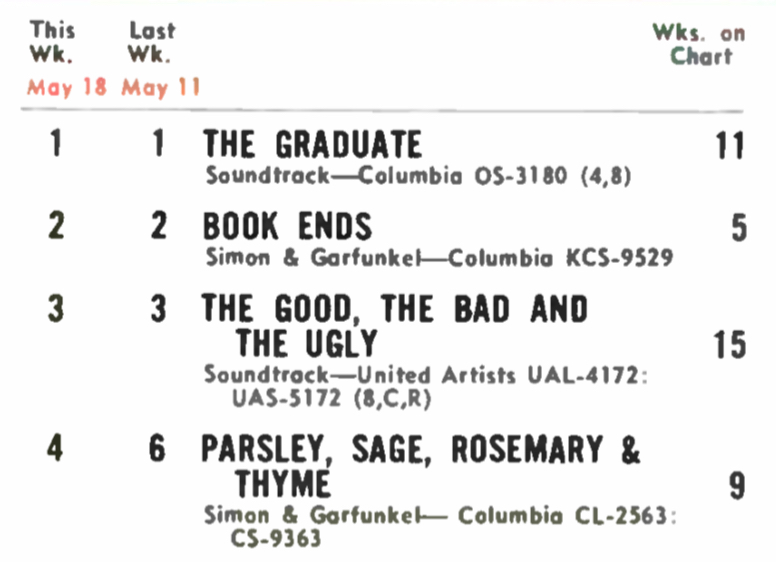
Got it?
Paul Mauriat Orchestra – Blooming Hits (6)
According to his Wiki page, the French orchestra leader released a dozen albums in 1967-68. This particular one included the instrumental, “Love is Blue,” which reached #1 on the pop singles chart for an astounding five weeks. Incredibly, the album not only hit the top, it stayed there for the entire month of March and into early April.
The Beatles – Magical Mystery Tour (7)
The Nov. 27, 1967 release began 1968 at #1, and stayed there through Feb. 17. Think about this: the follow-up to Sgt. Pepper arrived a mere six months after its predecessor, as the soundtrack to the television film of the same name. Its track listing reads like a greatest hits collection, with such songs as “Hello, Goodbye,” “Strawberry Fields Forever,” “Penny Lane,” “The Fool on the Hill,” the title track, “I Am the Walrus,” and “All You Need is Love.”
Related: 1968 in rock music – Our look back


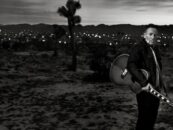

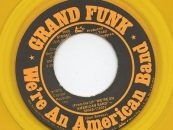

5 Comments so far
Jump into a conversationOne of my boyhood friends had a player piano in their house, and the only working ‘roll’ was “Love is Blue” – got pretty familiar with THAT melody!!
thanks, greg you just gave me a great setlist to play in my garage while building my latest guitar….
magical mystery tour one of the greatest albums of all time. better than pepper!
While I agree with Kerry that MMT is a great record, and in my opinion, an underrated Beatle LP, I can’t agree that it’s “better” than Pepper, simply because A) There’s no reason, or realistic way, to rate albums qualitatively. But more than that, I don’t see any real reason to do it. You can say “I like MMT better than Pepper,” but that doesn’t necessarily make it “Better.”
And B) However you would rank MMT next to Pepper, you can’t ignore the impact that Pepper had in its day — changing what rock music could be, and opening the door to so many records, including MMT, which essentially came from the same recording sessions as Pepper, so much so, that they really could have almost been a double album. But Pepper also heralded a new era for what the Beatles, themselves, were musically, albeit one they seemed to grow tired of, hence the many sketchy, off-hand, recordings of the White Album, which seemed to be almost a reaction to their own highly produced records, where they next seemed to eschew those much more polished production values of their previous two LPs. In my view, it was the period of Pepper and MMT that took the Beatles out of their Beatle Box sound, (which I will forever love) and opened up the doors to being whatever they wanted to be musically. Trouble is, without a singular guiding hand, it seems like beyond those high-end production records they didn’t have a real good idea of who or what they wanted to be musically, as the Beatles anymore. And this is evidenced quite clearly by Peter Jackson’s “Get Back.” After seeing that, I realized quite clearly that George Martin did an amazing job of stitching all sorts of song ideas, and the Beatles’ individual sounds and contributions together to make an incredibly classic album in “Abbey Road,” which was, of course, to be their last.
Also need to keep in mind that MMT was half a film soundtrack and half a collection of singles. It’s impressive that it holds together as well as it does, considering that dual identity.